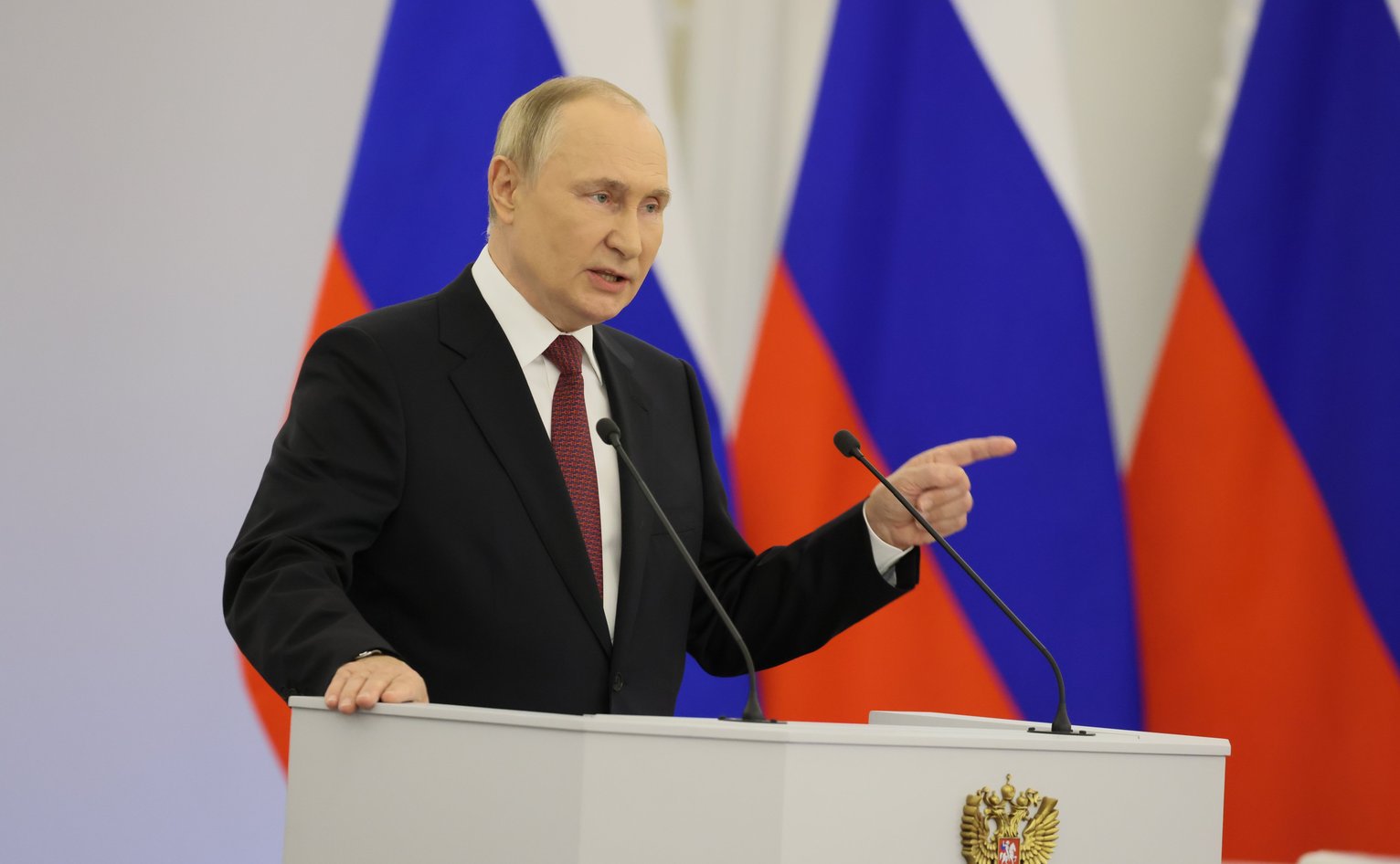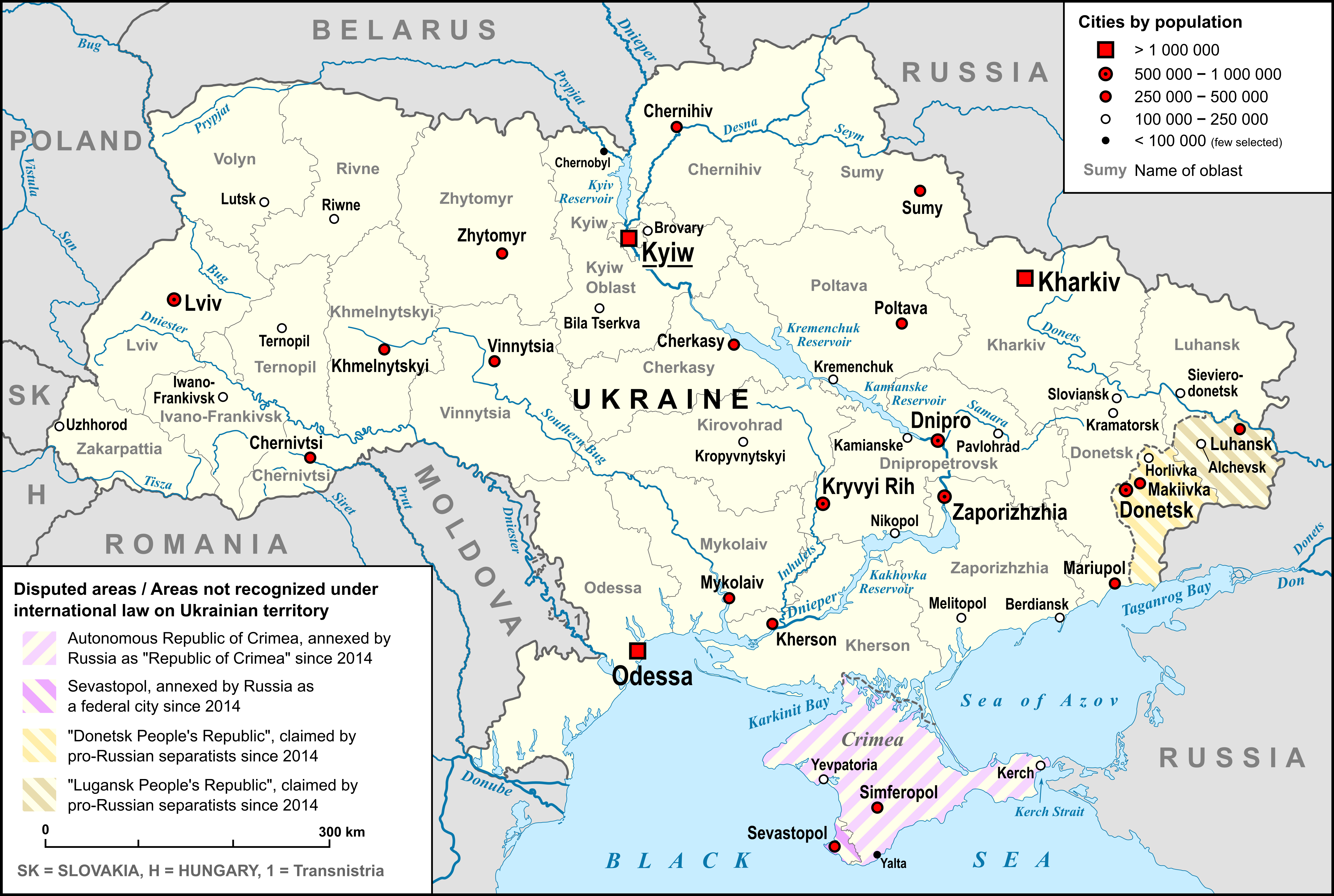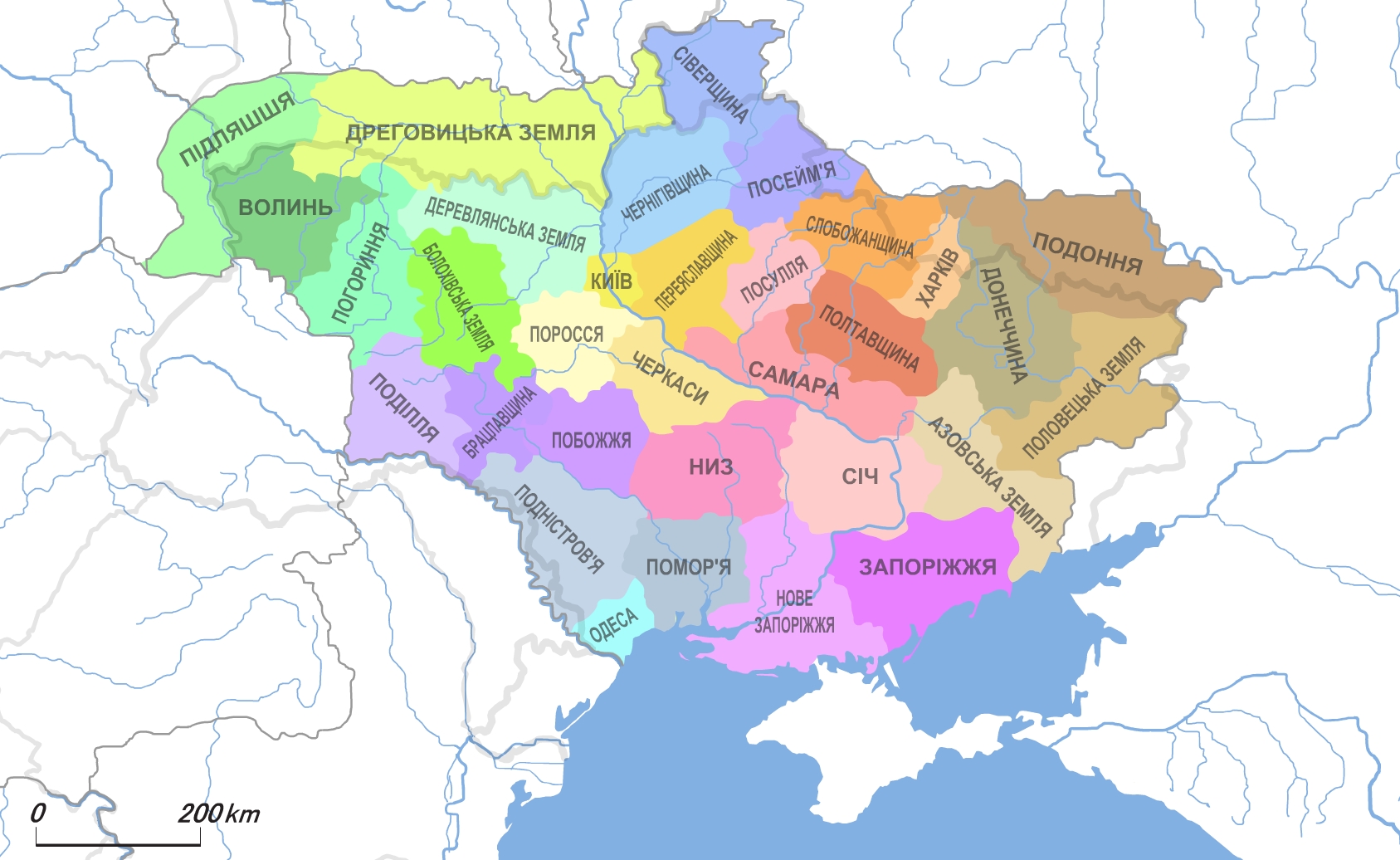|
Administrative Divisions Of Ukraine
The administrative divisions of Ukraine (Ukrainian: Адміністрати́вний у́стрій Украї́ни, tr. ''Administratyvnyi ustrii Ukrainy'') are subnational administrative divisions within the geographical area of Ukraine under the jurisdiction of the Ukrainian Constitution. Ukraine is a unitary state with three levels of administrative divisions: 27 regions (24 oblasts, two cities with special status and one autonomous republic), 136 raions and 1469 hromadas. The first tier consists of 27 subdivisions, of which there are 24 oblasts, one autonomous republic (Crimea) and two cities with special status ( Kyiv and Sevastopol). The second tier includes 136 raions. Ukraine directly inherited its administrative divisions from the local republican administration of the Soviet Union, the Ukrainian Soviet Socialist Republic, and the overall structure did not change significantly from the middle of the 20th century until reforms of July 2020; it was somewhat ... [...More Info...] [...Related Items...] OR: [Wikipedia] [Google] [Baidu] |
Ukrainian Language
Ukrainian ( uk, украї́нська мо́ва, translit=ukrainska mova, label=native name, ) is an East Slavic language of the Indo-European language family. It is the native language of about 40 million people and the official state language of Ukraine in Eastern Europe. Written Ukrainian uses the Ukrainian alphabet, a variant of the Cyrillic script. The standard Ukrainian language is regulated by the National Academy of Sciences of Ukraine (NANU; particularly by its Institute for the Ukrainian Language), the Ukrainian language-information fund, and Potebnia Institute of Linguistics. Comparisons are often drawn to Russian, a prominent Slavic language, but there is more mutual intelligibility with Belarusian,Alexander M. Schenker. 1993. "Proto-Slavonic," ''The Slavonic Languages''. (Routledge). pp. 60–121. p. 60: " hedistinction between dialect and language being blurred, there can be no unanimity on this issue in all instances..."C.F. Voegelin and F.M. Voege ... [...More Info...] [...Related Items...] OR: [Wikipedia] [Google] [Baidu] |
Paul D'Anieri
Paul J. D'Anieri is Professor of Public Policy and Political Science and former Executive Vice Chancellor & Provost of University of California, Riverside. Prior to his position at the UCR, Dr. D'Anieri served as the dean of the University of Florida College of Liberal Arts and Sciences (CLAS), from July 2008-June 2014 and the associate dean for humanities from 2004 to 2008 and associate dean for international programs from 1999 to 2003 at the University of Kansas. D’Anieri is a political scientist specializing politics and international relations in the former Soviet Union, focusing on Ukraine and Russia. He is also considered and expert on economics, finance, and budgeting in US universities, which became a focus during his administrative career. D’Anieri received his bachelor's degree from Michigan State University in International Relations in 1986. He then went on to earn a master's degree and doctorate in government from Cornell University in 1991. Academic career D’ ... [...More Info...] [...Related Items...] OR: [Wikipedia] [Google] [Baidu] |
Annexation Of Southeastern Ukraine By The Russian Federation
On 30 September 2022, Russia, amid an ongoing invasion of Ukraine, unilaterally declared its annexation of areas in and around four Ukrainian oblasts – Luhansk, Donetsk, Zaporizhzhia and Kherson. The boundaries of the areas to be annexed and their borders were not defined; Russian officials stated that they would be defined later. None of the oblasts were fully under Russian control at the time of the declaration. If limited to the areas then under Russian control (about 90,000 sq km or 15% of Ukraine's territory) the annexation would still be the largest in Europe since World War II. The annexation occurred after internationally unrecognized referendums held days prior, which were organized by Russian occupation authorities in territories where hostilities were ongoing and much of the population had fled. It occurred seven months after the start of the invasion and less than a month after the start of the Ukrainian Kharkiv counteroffensive. The signing ceremony was he ... [...More Info...] [...Related Items...] OR: [Wikipedia] [Google] [Baidu] |
Annexation Of Crimea By The Russian Federation
In February and March 2014, Russia invaded and subsequently annexed the Crimean Peninsula from Ukraine. This event took place in the aftermath of the Revolution of Dignity and is part of the wider Russo-Ukrainian War. The events in Kyiv that ousted Ukrainian president Viktor Yanukovych on 22 February 2014 sparked pro-Russian demonstrations as of 23 February against the (prospected) new Ukrainian government. At the same time Russian president Vladimir Putin discussed Ukrainian events with security service chiefs remarking that "we must start working on returning Crimea to Russia". On 27 February, Russian troops captured strategic sites across Crimea, followed by the installation of the pro-Russian Aksyonov government in Crimea, the Crimean status referendum and the declaration of Crimea's independence on 16 March 2014. Although Russia initially claimed their military was not involved in the events, Putin later admitted that troops were deployed to "stand behind Crimea ... [...More Info...] [...Related Items...] OR: [Wikipedia] [Google] [Baidu] |
Government Of Ukraine
The Cabinet of Ministers of Ukraine ( uk, Кабінет Міністрів України, translit=Kabinet Ministriv Ukrainy; shortened to CabMin), commonly referred to as the Government of Ukraine ( uk, Уряд України, ''Uriad Ukrainy''), is the highest body of state executive power in Ukraine. As Cabinet of Ministers of the Ukrainian SSR, it was formed on 18 April 1991, by the Law of Ukrainian SSR No.980-XII. Vitold Fokin was approved as the first Prime Minister of Ukraine. The cabinet is a collegiate body consisting of the cabinet's "presidium" composed of the Prime Minister of Ukraine and their vice prime ministers as well as other ministers who participate and vote on sessions of the cabinet. The prime minister presides over the cabinet. Some vice prime ministers may be appointed as the first vice prime ministers. Unlike the Soviet period of the government when presidium was actually a functioning institution, the current government presidium is nominal and v ... [...More Info...] [...Related Items...] OR: [Wikipedia] [Google] [Baidu] |
City Of Regional Significance (Ukraine)
City of regional significance ( uk, місто обласного значення, ''misto oblasnoho znachennia'') in Ukraine was a type of second-level administrative division or municipality, the other type being raions (districts). In the first-level division of oblasts, they were referred to as ''cities of oblast significance''; in the first-level autonomous republic of Crimea, they were ''cities of republican significance''. The designation was created with the introduction of oblasts in 1932. It was abolished in a 2020 reform that merged raions together and integrated the city municipalities into them. Such city municipality was complex and usually combined the city proper and adjacent populated places. The city of regional (oblast) significance was governed by a city council known as ''mis'krada'', which was chaired by a mayor. There were instances where a municipality might have included only the city alone (city proper), while in others instances a municipality might ha ... [...More Info...] [...Related Items...] OR: [Wikipedia] [Google] [Baidu] |
Cities Of Ukraine
This is a complete list of cities in Ukraine. On 1 January 2022, there were 461 cities ( uk, місто, ''misto'') in Ukraine. City status is granted by the Verkhovna Rada, the Ukrainian parliament. The city status is only partially related to the size of a populated place in Ukraine. Smaller settlements are urban-type settlements (comparable to towns in English-speaking countries) and villages ( uk, село, ''selo''). Historically, there were systems of city rights, granted by the territorial lords, which defined the status of a place as a ''misto'' or ''selo''. Cities were self-governing and had several privileges. The list of cities is ordered by 2021 estimates of population and compared to the 2001 Ukrainian Census, except for Chernobyl for which population is an unofficial estimate. The cities with special status are shown in ''italic''. Cities in Ukraine Jump to table of cities See also * Geography of ... [...More Info...] [...Related Items...] OR: [Wikipedia] [Google] [Baidu] |
Populated Places In Ukraine
Populated place in Ukraine ( uk, Населений пункт) is a structural element of human settling system, a stationary settlement, territorially integral compact area of population concentration basic and important feature of which is permanent human habitation. Populated places in Ukraine are systematized into two major categories: urban and rural. Urban populated places can be either cities or urban settlements, while rural populated places can be either villages or rural settlements. According to the 2001 Ukrainian Census there are 1,344 urban populated places and 28,621 rural populated places in Ukraine. All populated places are governed by their municipality ( hromada), may it be a village, a city or any settlement hromada. A municipality may consist of one or several populated places and is (except Kyiv and Sevastopol) a constituent part of a raion (district) which in turn is constituents of an oblast (province). Beside regular populated places in Ukraine that ... [...More Info...] [...Related Items...] OR: [Wikipedia] [Google] [Baidu] |
Ukrainian Soviet Socialist Republic
The Ukrainian Soviet Socialist Republic ( uk, Украї́нська Радя́нська Соціалісти́чна Респу́бліка, ; russian: Украи́нская Сове́тская Социалисти́ческая Респу́блика, group=note), abbreviated as the Ukrainian SSR, UkrSSR, or UkSSR, and also known as Soviet Ukraine, was one of the constituent republics of the Soviet Union from 1922 until 1991. In the anthem of the Ukrainian SSR, it was referred to simply as ''Ukraine''. Under the Soviet one-party model, the Ukrainian SSR was governed by the Communist Party of the Soviet Union through its republican branch: the Communist Party of Ukraine. The first iterations of the Ukrainian SSR were established during the Russian Revolution, particularly after the Bolshevik Revolution. The outbreak of the Ukrainian–Soviet War in the former Russian Empire saw the Bolsheviks defeat the independent Ukrainian People's Republic, after which they foun ... [...More Info...] [...Related Items...] OR: [Wikipedia] [Google] [Baidu] |
Soviet Union
The Soviet Union,. officially the Union of Soviet Socialist Republics. (USSR),. was a transcontinental country that spanned much of Eurasia from 1922 to 1991. A flagship communist state, it was nominally a federal union of fifteen national republics; in practice, both its government and its economy were highly centralized until its final years. It was a one-party state governed by the Communist Party of the Soviet Union, with the city of Moscow serving as its capital as well as that of its largest and most populous republic: the Russian SFSR. Other major cities included Leningrad (Russian SFSR), Kiev (Ukrainian SSR), Minsk (Byelorussian SSR), Tashkent ( Uzbek SSR), Alma-Ata (Kazakh SSR), and Novosibirsk (Russian SFSR). It was the largest country in the world, covering over and spanning eleven time zones. The country's roots lay in the October Revolution of 1917, when the Bolsheviks, under the leadership of Vladimir Lenin, overthrew the Russian Provisional Govern ... [...More Info...] [...Related Items...] OR: [Wikipedia] [Google] [Baidu] |
Republics Of The Soviet Union
The Republics of the Union of Soviet Socialist Republics or the Union Republics ( rus, Сою́зные Респу́блики, r=Soyúznye Respúbliki) were National delimitation in the Soviet Union, national-based administrative units of the Soviet Union, Union of Soviet Socialist Republics (USSR). The Soviet Union was formed in 1922 by a Treaty on the Creation of the Union of Soviet Socialist Republics, treaty between the Soviet republics of Byelorussian Soviet Socialist Republic, Byelorussia, Russian Soviet Federative Socialist Republic, Russia, Transcaucasian Socialist Federative Soviet Republic, Transcaucasia, and Ukrainian Soviet Socialist Republic, Ukraine, by which they became its constituent republics. For most of its history, the USSR was a highly Centralisation, centralized state despite its nominal structure as a federation of republics; the decentralization reforms during the era of ''perestroika'' and ''glasnost'' conducted by Mikhail Gorbachev are cited as o ... [...More Info...] [...Related Items...] OR: [Wikipedia] [Google] [Baidu] |
Administrative Divisions Of The Ukrainian SSR
During its existence from 1919 to 1991, the Ukrainian Soviet Socialist Republic consisted of many administrative divisions. Itself part of the highly centralized Soviet Union, sub-national divisions in the Ukrainian SSR were subordinate to higher executive authorities and derived their power from them. Throughout the Ukrainian SSR's history, other national subdivisions were established in the republic, including guberniyas and okrugs, before finally being reorganized into their present structure as oblasts. At the time of the Ukrainian SSR's independence from the Soviet Union, the country was composed of 25 oblasts ( provinces) and two cities with special status, Kiev, the capital, and Sevastopol, respectively. Background Prior to the First World War, most of the Ukrainian lands were integrated into the Imperial Russian structure of guberniyas (Governorate) which in turn split into uezds and volosts. The map to the right shows the outline of the governorates with rega ... [...More Info...] [...Related Items...] OR: [Wikipedia] [Google] [Baidu] |






